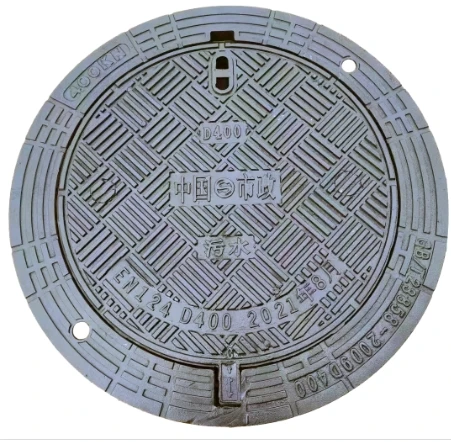- Afrikaans
- Albanian
- Amharic
- Arabic
- Armenian
- Azerbaijani
- Basque
- Belarusian
- Bengali
- Bosnian
- Bulgarian
- Catalan
- Cebuano
- China
- China (Taiwan)
- Corsican
- Croatian
- Czech
- Danish
- Dutch
- English
- Esperanto
- Estonian
- Finnish
- French
- Frisian
- Galician
- Georgian
- German
- Greek
- Gujarati
- Haitian Creole
- hausa
- hawaiian
- Hebrew
- Hindi
- Miao
- Hungarian
- Icelandic
- igbo
- Indonesian
- irish
- Italian
- Japanese
- Javanese
- Kannada
- kazakh
- Khmer
- Rwandese
- Korean
- Kurdish
- Kyrgyz
- Lao
- Latin
- Latvian
- Lithuanian
- Luxembourgish
- Macedonian
- Malgashi
- Malay
- Malayalam
- Maltese
- Maori
- Marathi
- Mongolian
- Myanmar
- Nepali
- Norwegian
- Norwegian
- Occitan
- Pashto
- Persian
- Polish
- Portuguese
- Punjabi
- Romanian
- Russian
- Samoan
- Scottish Gaelic
- Serbian
- Sesotho
- Shona
- Sindhi
- Sinhala
- Slovak
- Slovenian
- Somali
- Spanish
- Sundanese
- Swahili
- Swedish
- Tagalog
- Tajik
- Tamil
- Tatar
- Telugu
- Thai
- Turkish
- Turkmen
- Ukrainian
- Urdu
- Uighur
- Uzbek
- Vietnamese
- Welsh
- Bantu
- Yiddish
- Yoruba
- Zulu
gru . 13, 2024 20:55 Back to list
Designing Efficient Single Layer Pallet Molds for Optimal Production Features and Benefits
Understanding Single Layer Pallet Mould A Key Component in Plastic Production
In the ever-evolving world of manufacturing and production, the significance of efficient and durable tools cannot be overstated. One such critical component in the realm of plastic production is the single layer pallet mould. This article delves into the essentials of single layer pallet moulds, exploring their function, benefits, manufacturing process, and applications in various industries.
What is a Single Layer Pallet Mould?
A single layer pallet mould is a specialized tool used in the manufacturing of plastic pallets through the process of injection moulding. It is designed to create pallets that are used for storage, transportation, and handling of goods across various sectors. Characterized by its simplicity, the single layer design focuses on creating a lightweight yet robust pallet that can efficiently meet the demands of different logistical challenges.
Functionality of Single Layer Pallet Moulds
The primary function of a single layer pallet mould is to shape molten plastic into a desired pallet configuration. The mould itself consists of two halves— the core and the cavity. When heated plastic is injected into the mould under high pressure, it takes the shape of the cavity. After cooling, the pallet is ejected from the mould, ready for numerous applications. This quick turnaround time allows manufacturers to produce pallets at scale, aligning with the fast-paced needs of modern supply chains.
Benefits of Using Single Layer Pallet Moulds
1. Cost-Effectiveness Single layer pallet moulds are designed for efficiency, minimizing material waste during production. Additionally, they tend to require less energy compared to more complex moulding systems.
2. Lightweight Design The single layer structure results in a lightweight product that is easier to handle, transport, and store. This characteristic is particularly beneficial in reducing shipping costs and improving overall logistical efficiency.
3. Durability While being lightweight, the plastic pallets produced by single layer moulds are exceptionally durable. They can withstand significant weight and resist various environmental factors, making them suitable for both indoor and outdoor use.
5. Environmentally Friendly Modern single layer pallet moulds can be designed to work with recyclable plastics, thus promoting sustainability in manufacturing practices.
single layer pallet mould

The Manufacturing Process of Single Layer Pallet Moulds
The process of creating a single layer pallet mould involves several key steps
1. Design and Engineering Using CAD software, engineers design the mould considering factors such as pallet specifications, material type, and production volume.
2. Material Selection High-quality steel or aluminum is used for mould construction, ensuring robustness and longevity. The choice of material also affects heat conduction and production efficiency.
3. Machining The selected material is machined to the precise specifications of the design. Advanced CNC machines are typically employed to achieve high accuracy.
4. Assembly The machined components are assembled to form the mould, with particular attention given to ensuring tight seals and smooth surfaces to facilitate easy release of the finished product.
5. Testing and Quality Control Once assembled, the mould undergoes rigorous testing to ensure it meets the required standards. This step is crucial to identify any potential defects ahead of the production phase.
Applications of Single Layer Pallet Moulds
Single layer pallets produced from these moulds find applications across a wide range of industries, including
- Food and Beverage Used for transporting goods while ensuring hygiene and safety standards. - Pharmaceutical Critical for handling sensitive products that require careful transportation. - Retail and Distribution Facilitating efficient warehousing and long-distance shipping. - Manufacturing Integral in moving components and products within production facilities.
Conclusion
The single layer pallet mould plays an essential role in modern manufacturing, particularly in the realm of logistics and supply chain management. By providing a cost-effective, durable, and customizable solution, it meets the growing demands of various industries while promoting sustainable practices. As technology continues to advance, the design and efficiency of single layer pallet moulds will likely evolve, further enhancing their importance in the manufacturing ecosystem.
-
Custom Low-NOx Gas Boilers Efficient Commercial Heating Solutions
NewsMay.25,2025
-
Low-NOx Condensing Gas-Fired Boilers Efficient & Custom Solutions
NewsMay.25,2025
-
Custom Domestic Hot Water Heat Exchangers Efficient & Durable
NewsMay.24,2025
-
Cast Iron vs. Ductile Iron Differences, Uses & Benefits
NewsMay.24,2025
-
Top Gas Fired Boiler Supplier High-Efficiency Solutions & OEM Support
NewsMay.23,2025
-
Marine Gear Box Casting Solutions Durable & Custom OEM/ODM
NewsMay.23,2025


